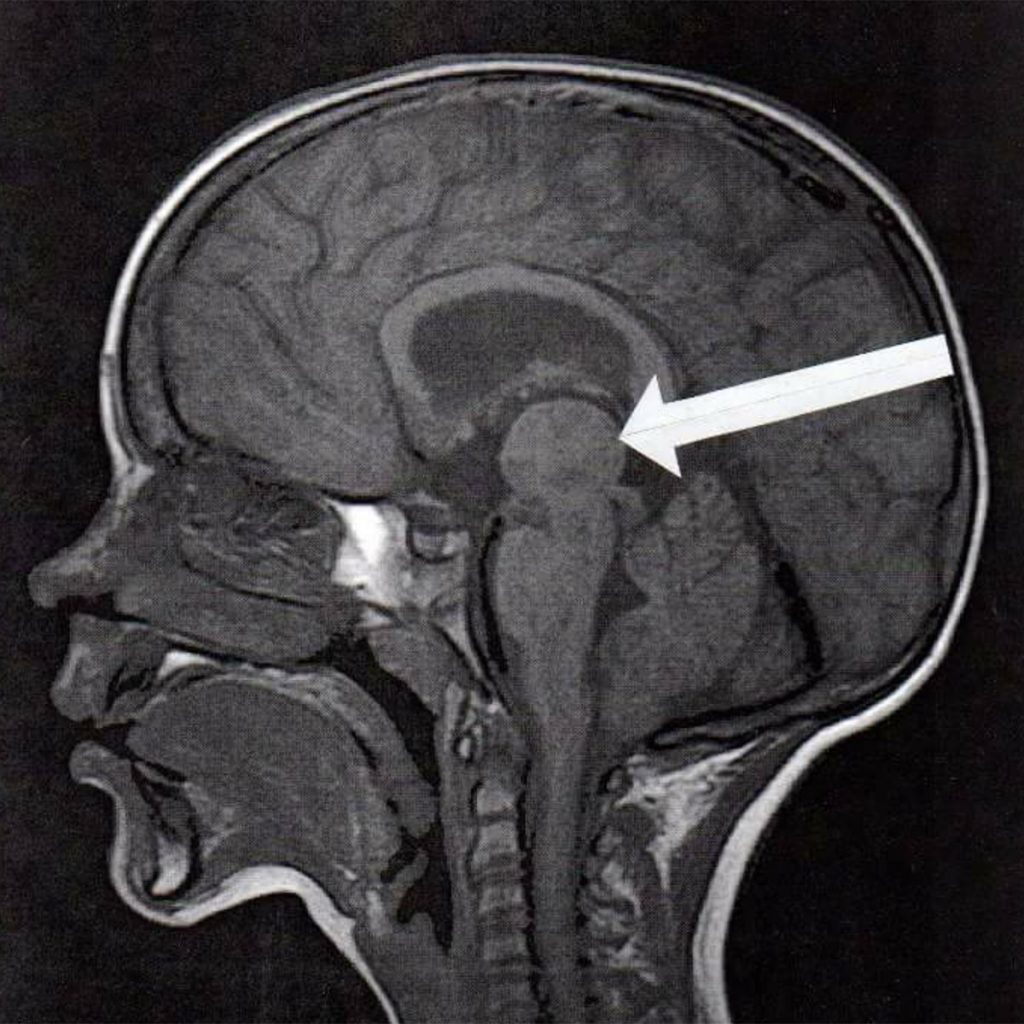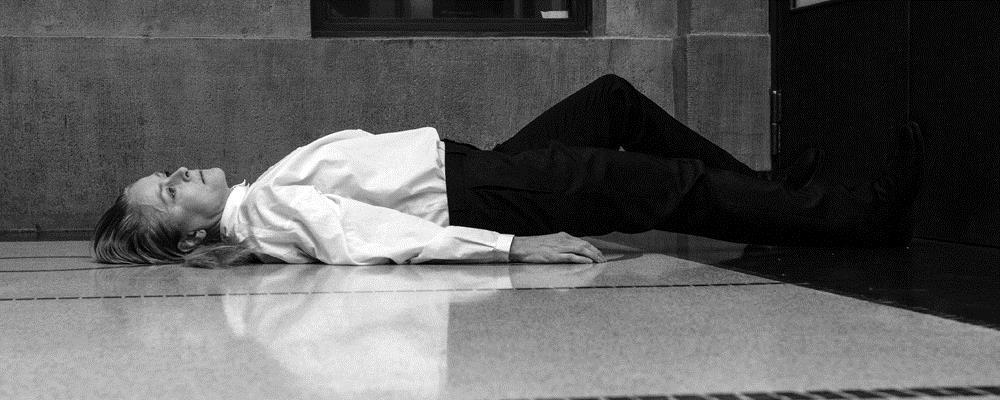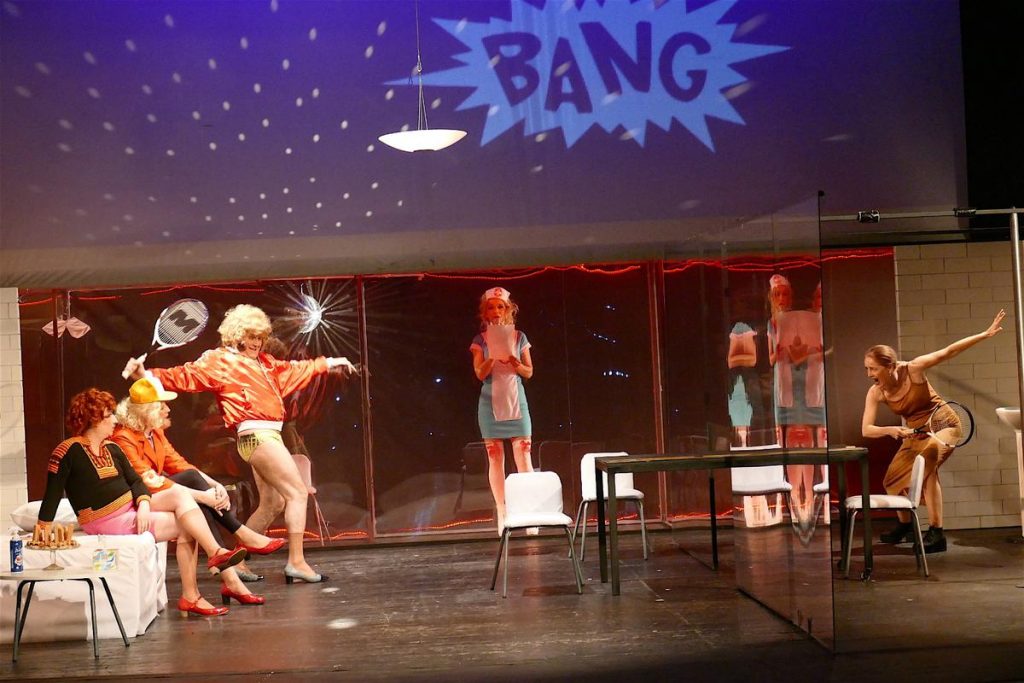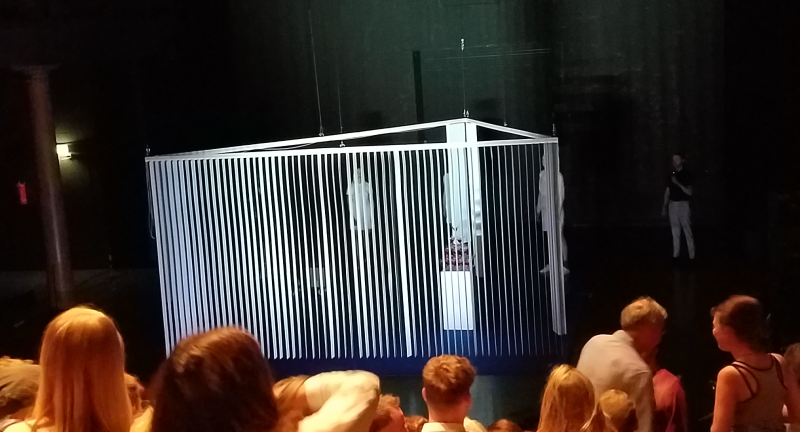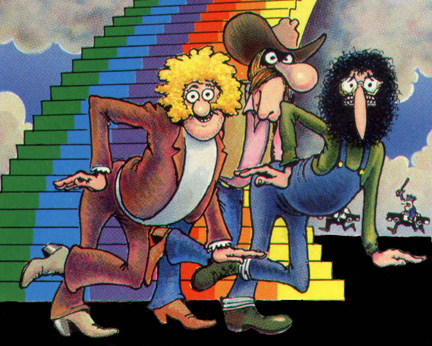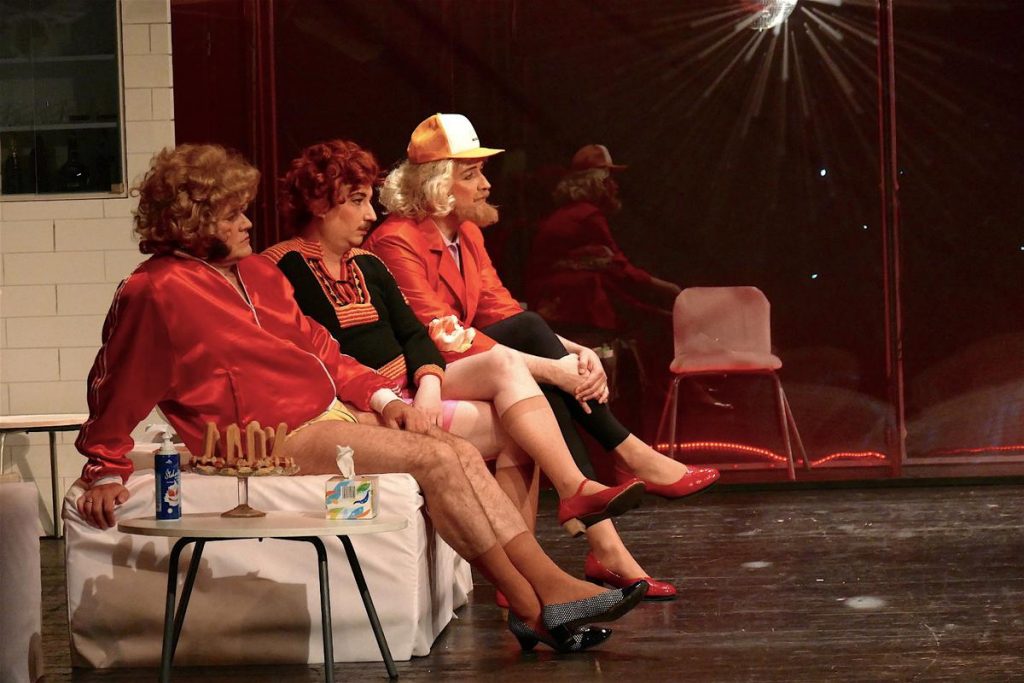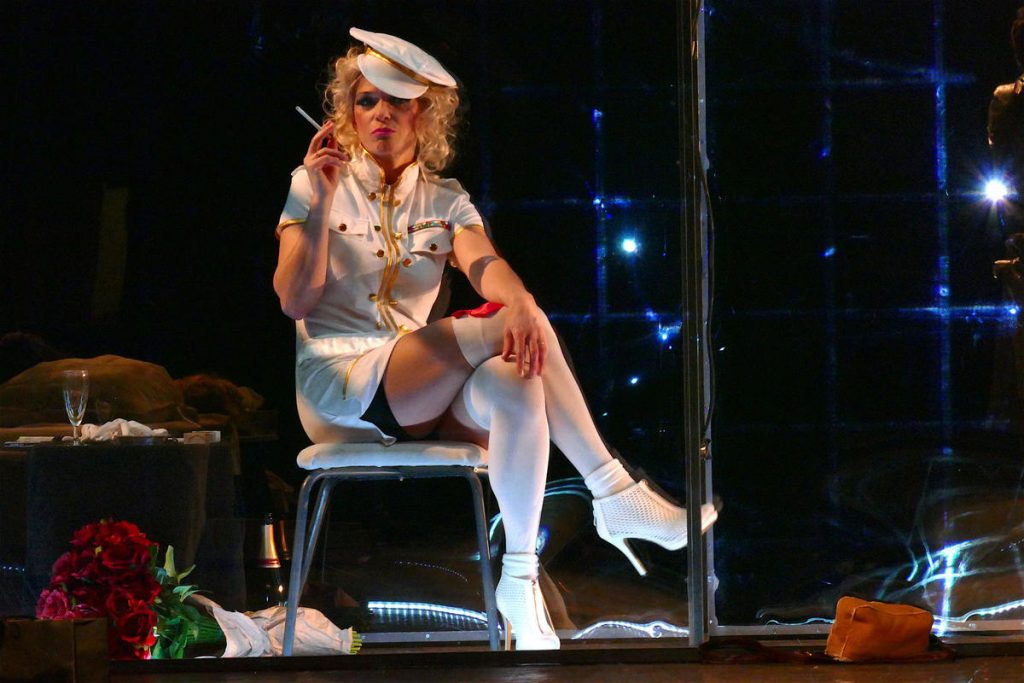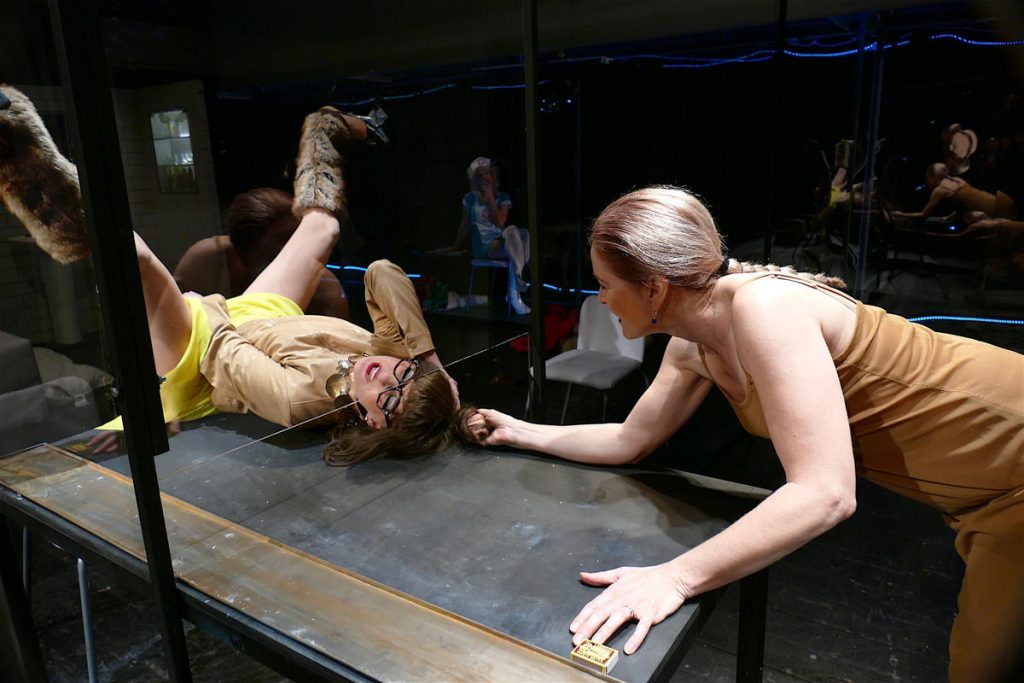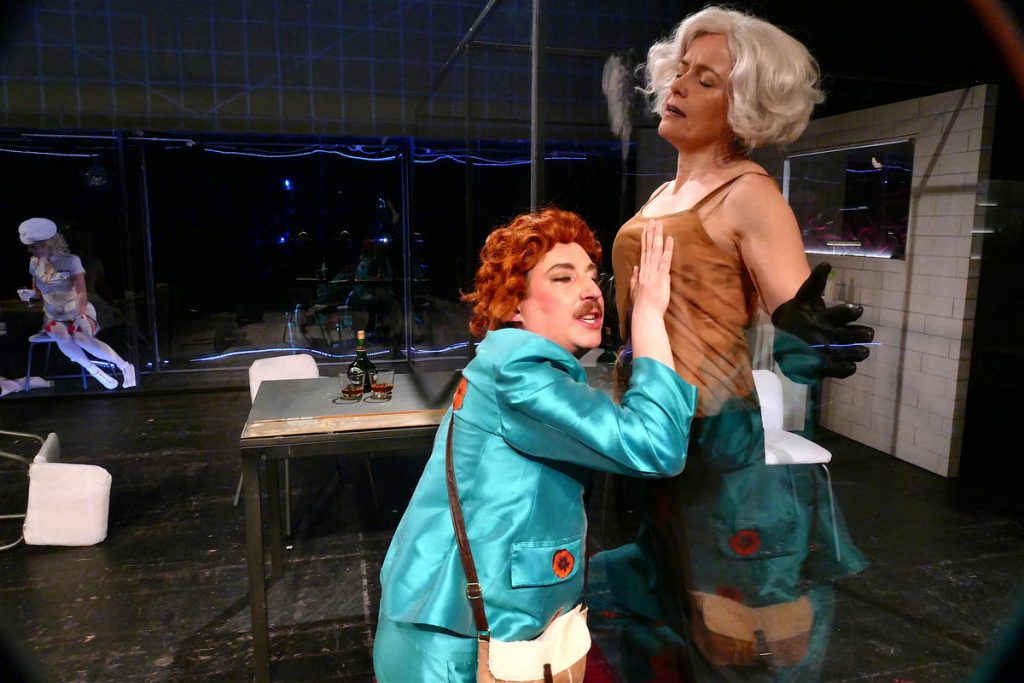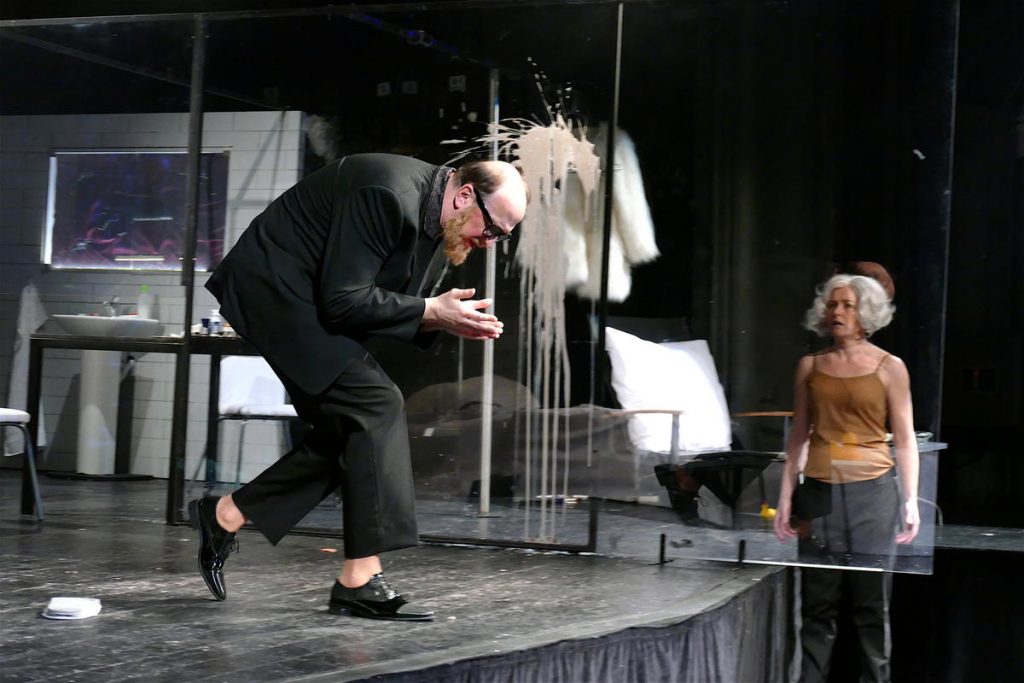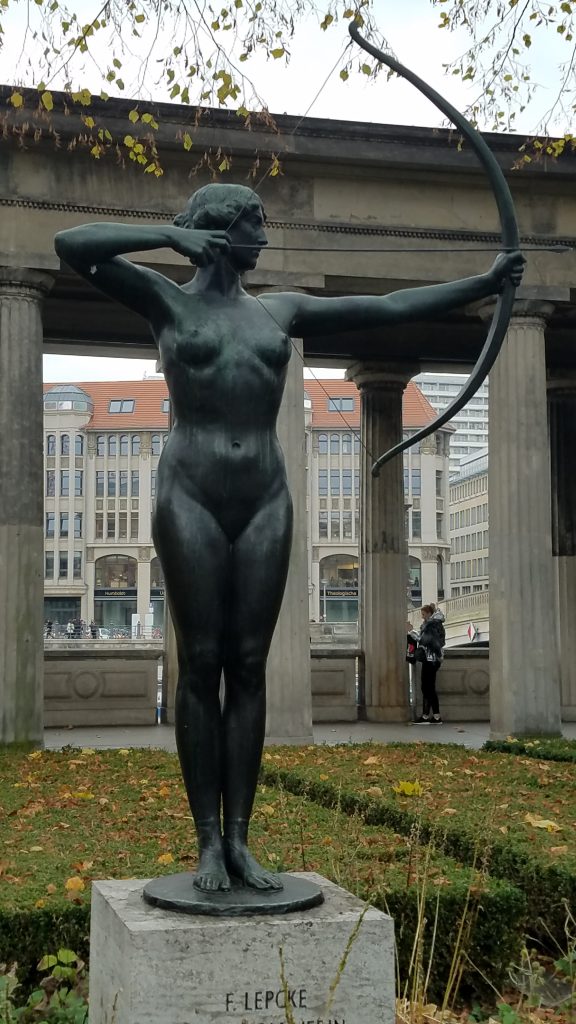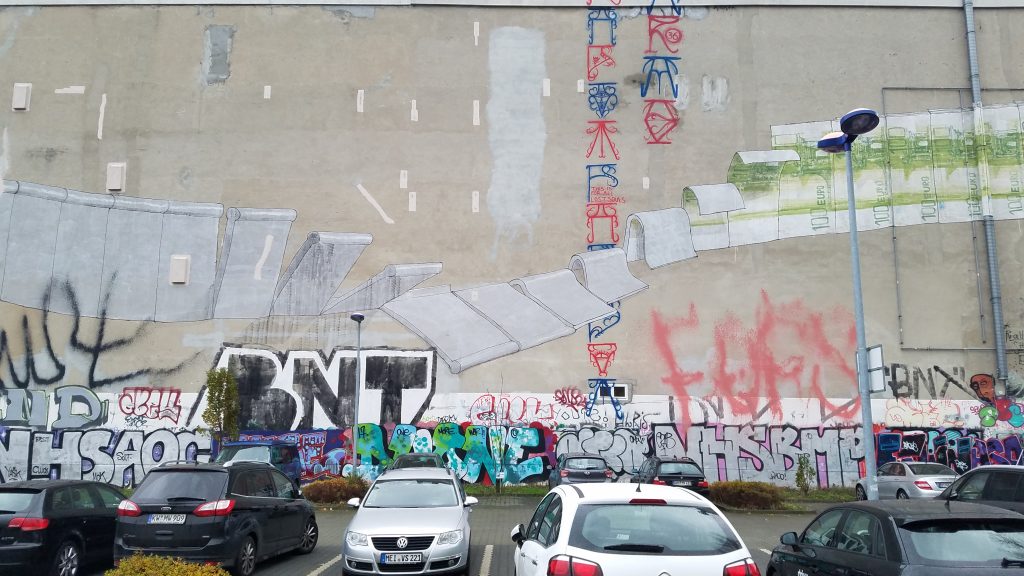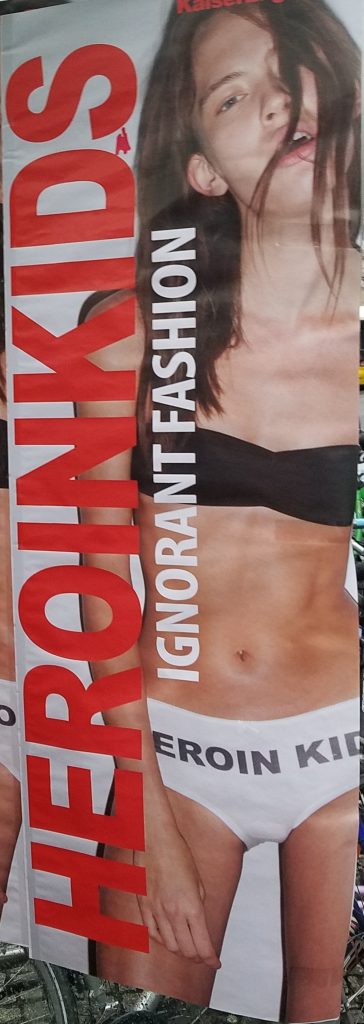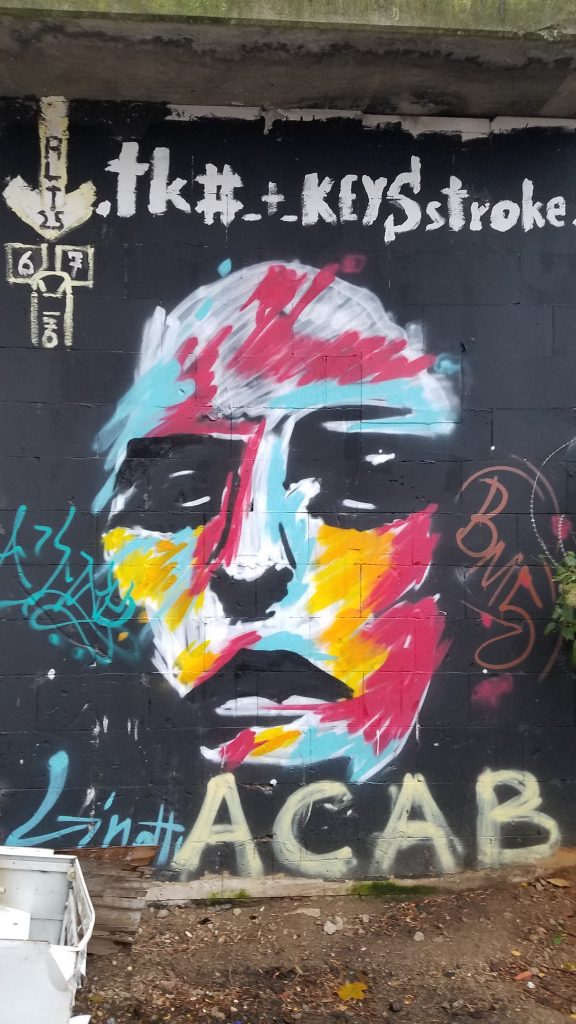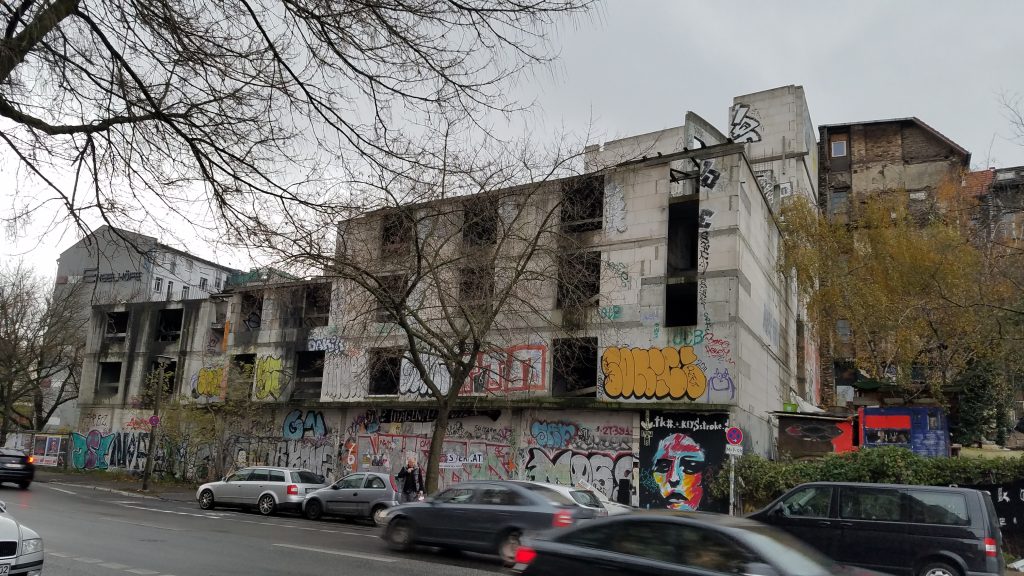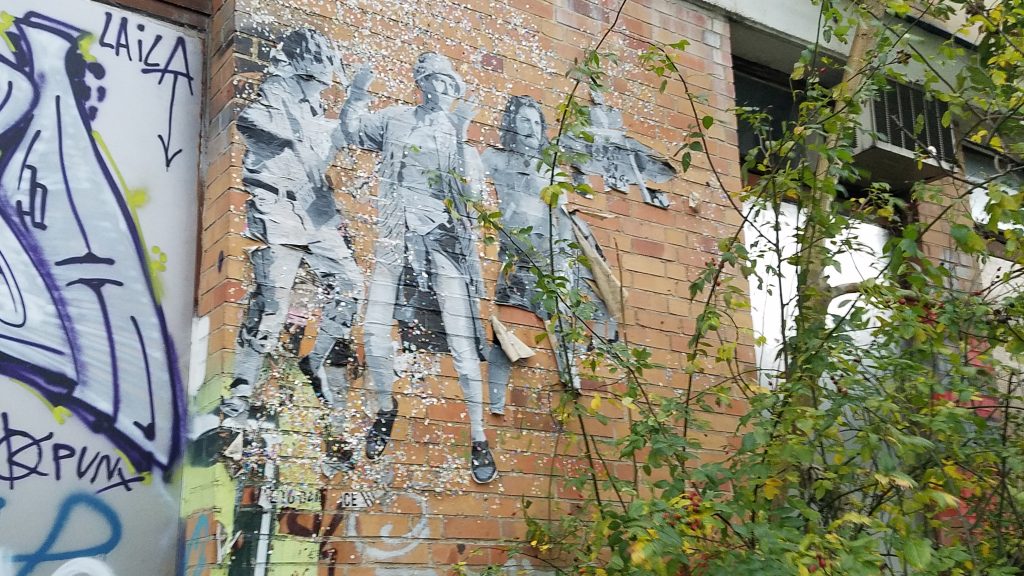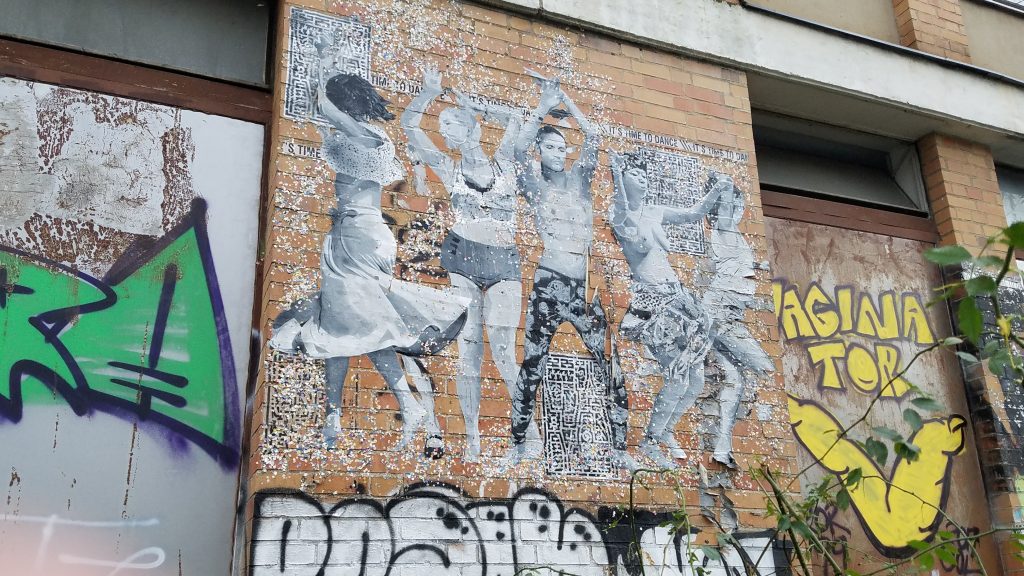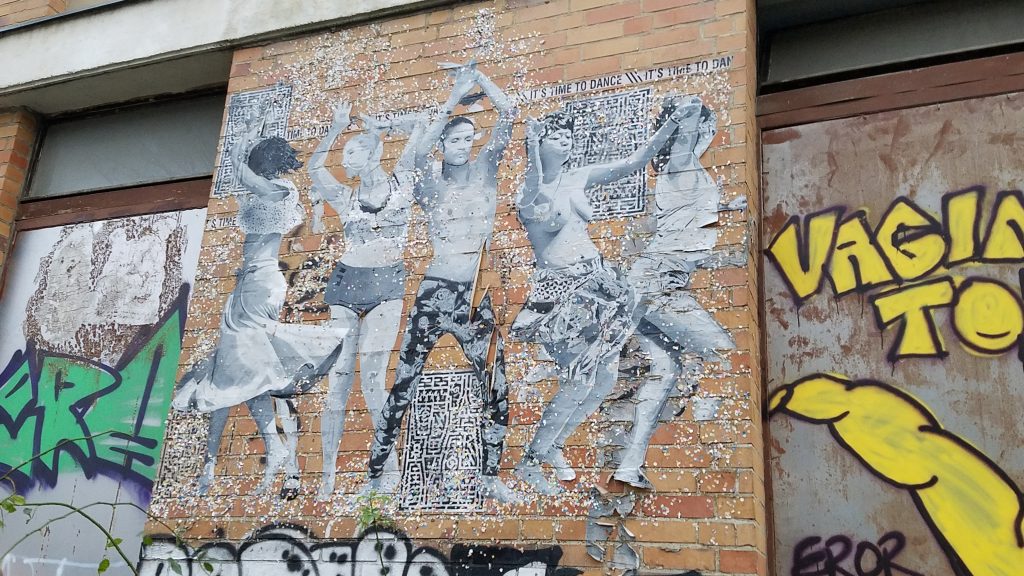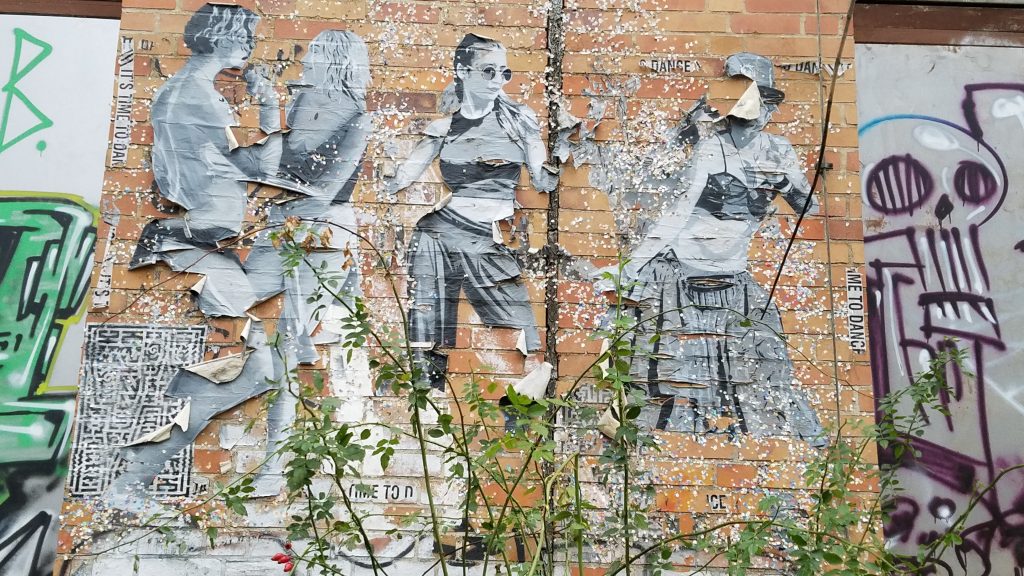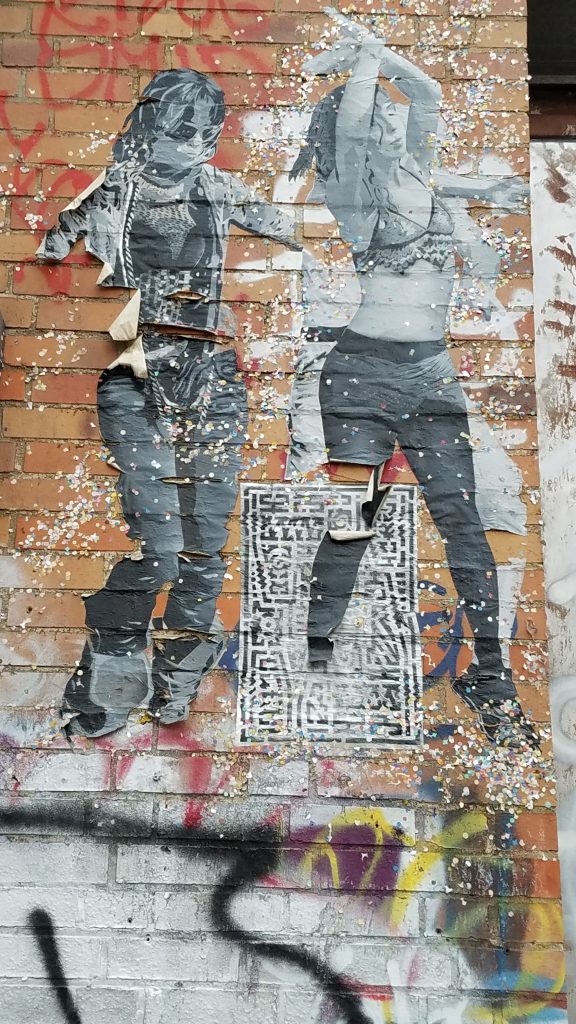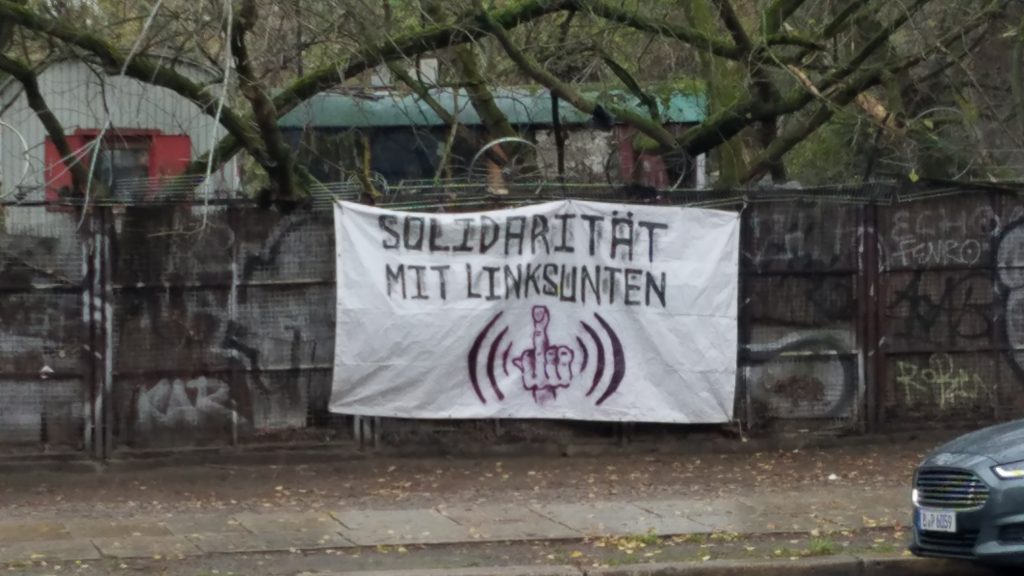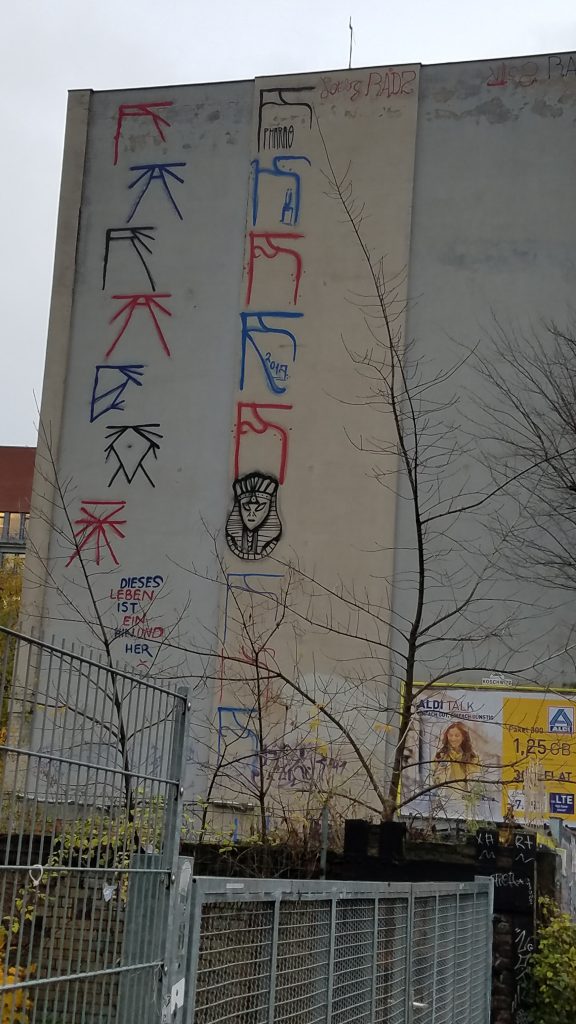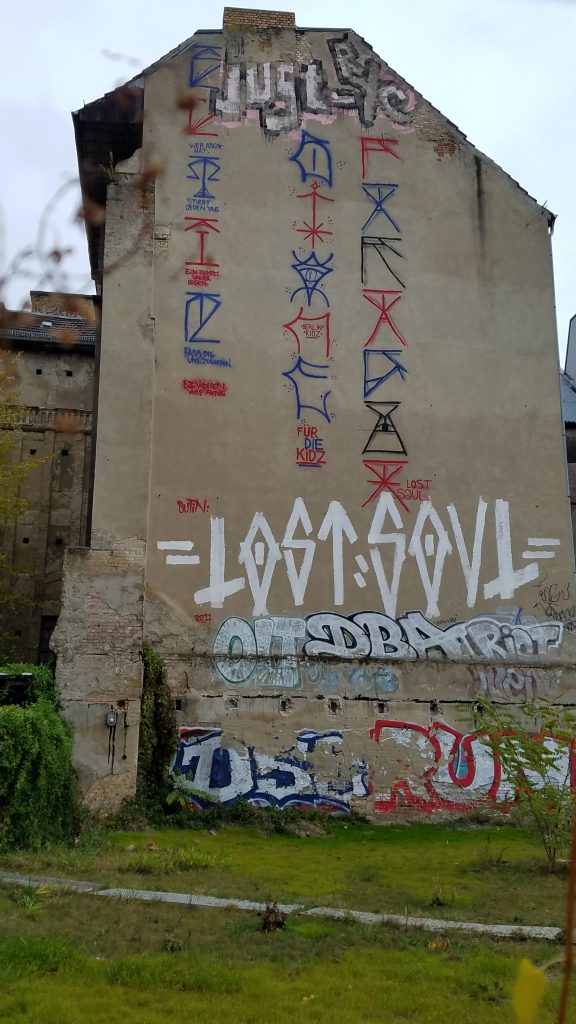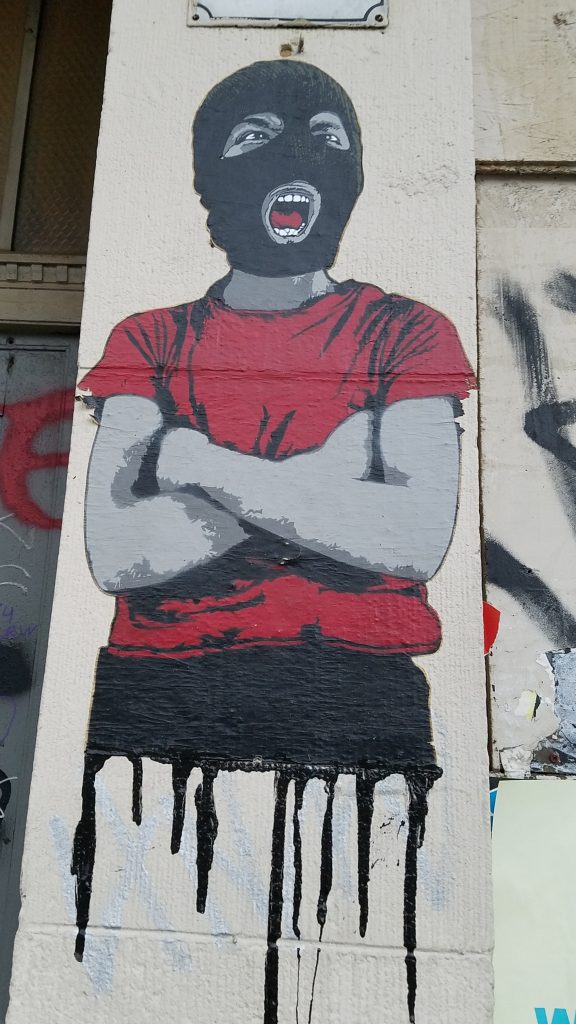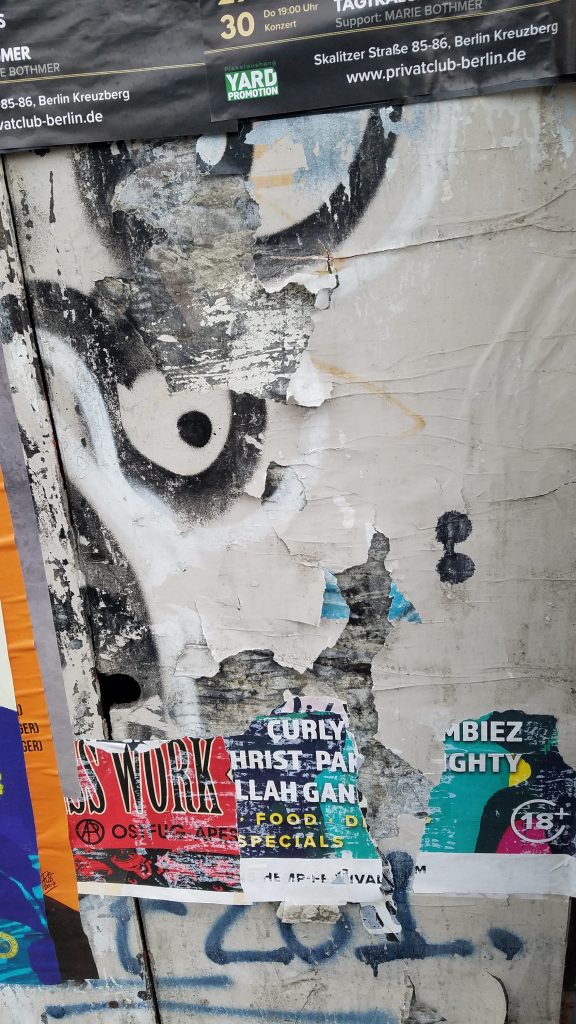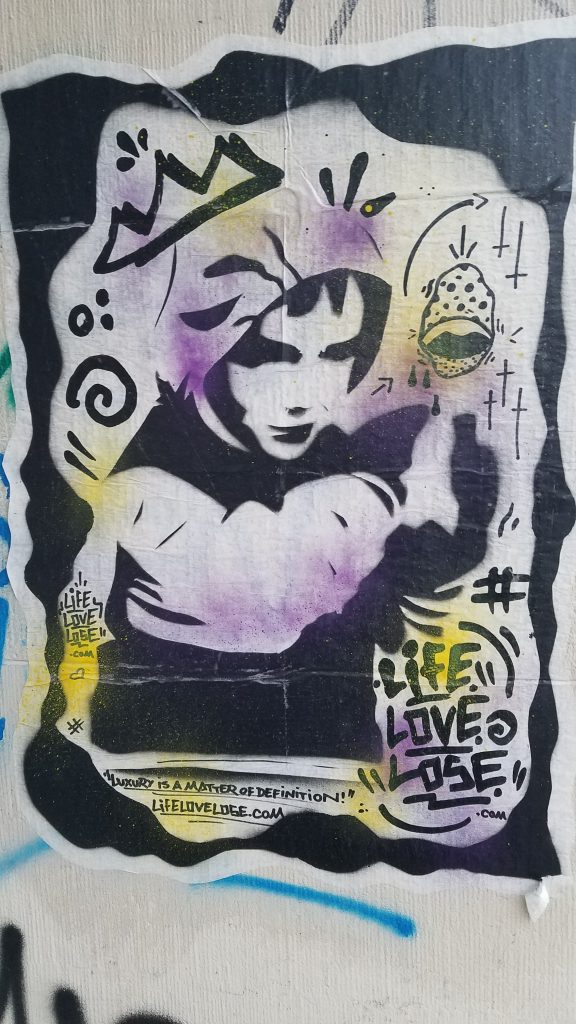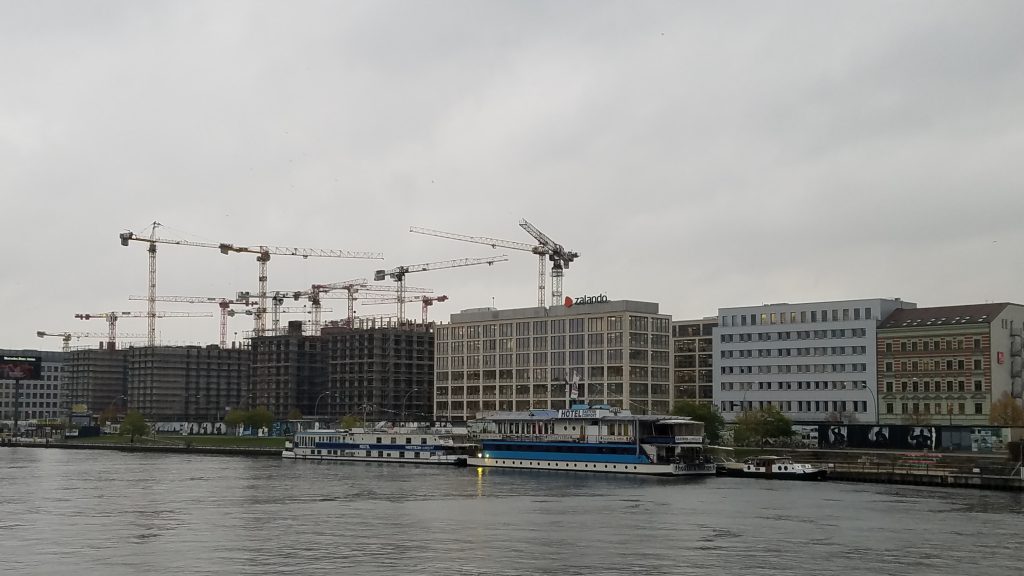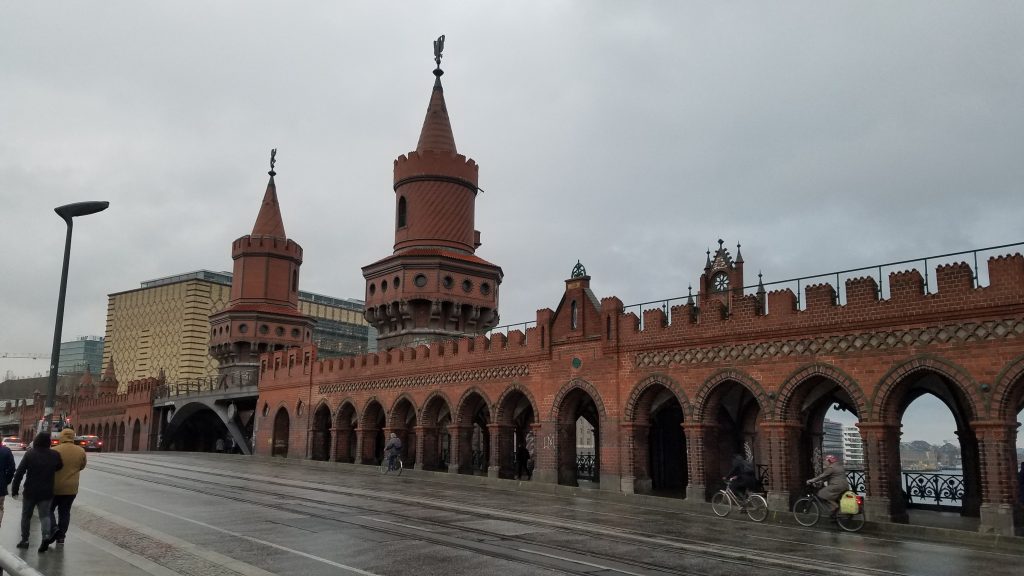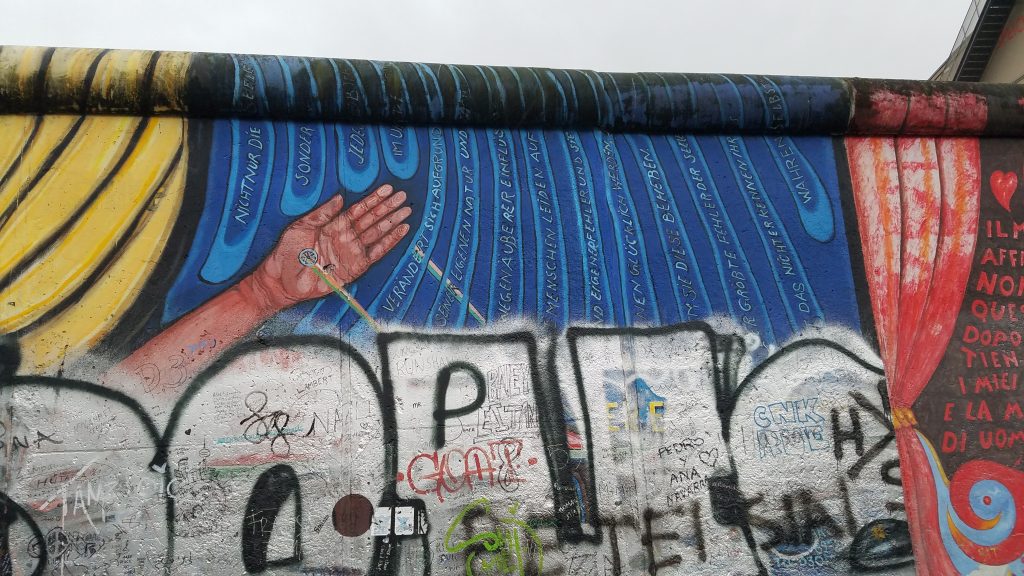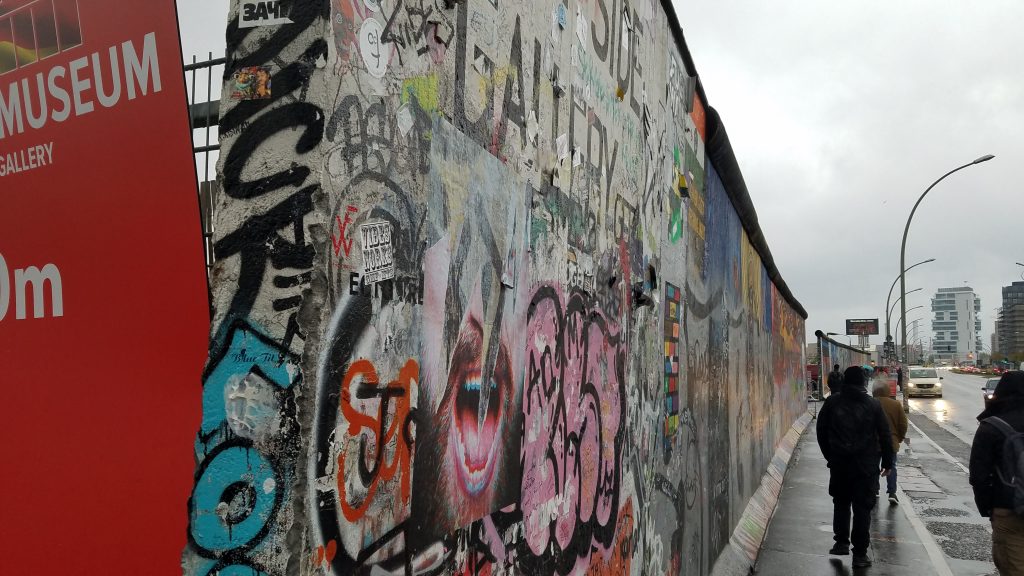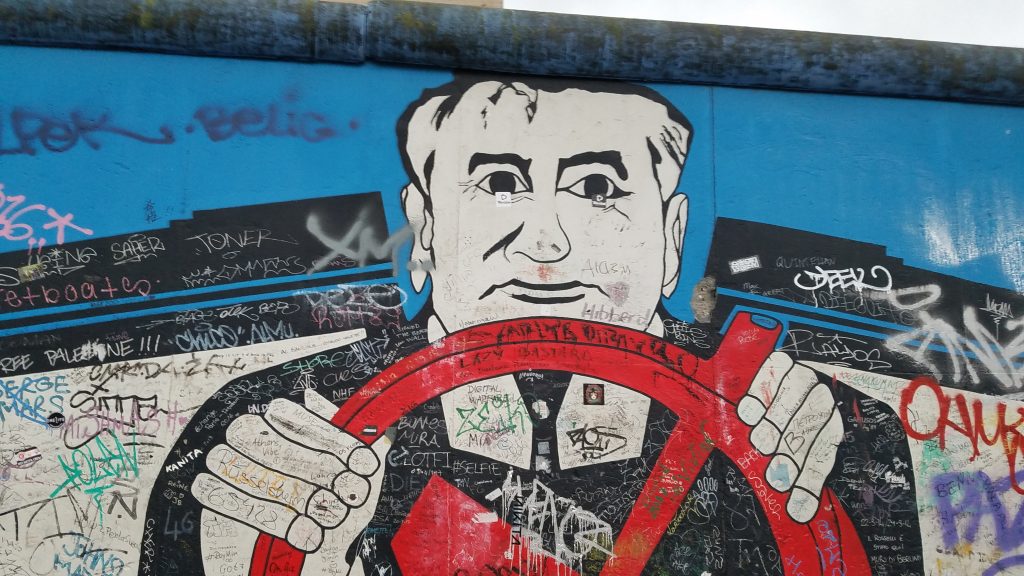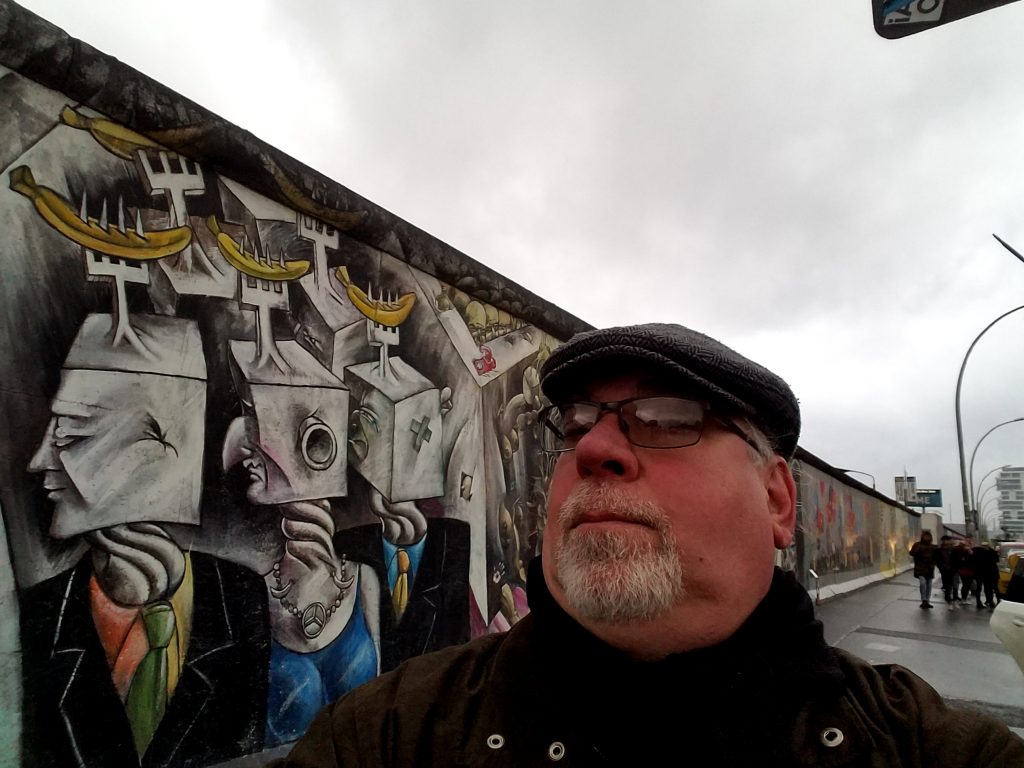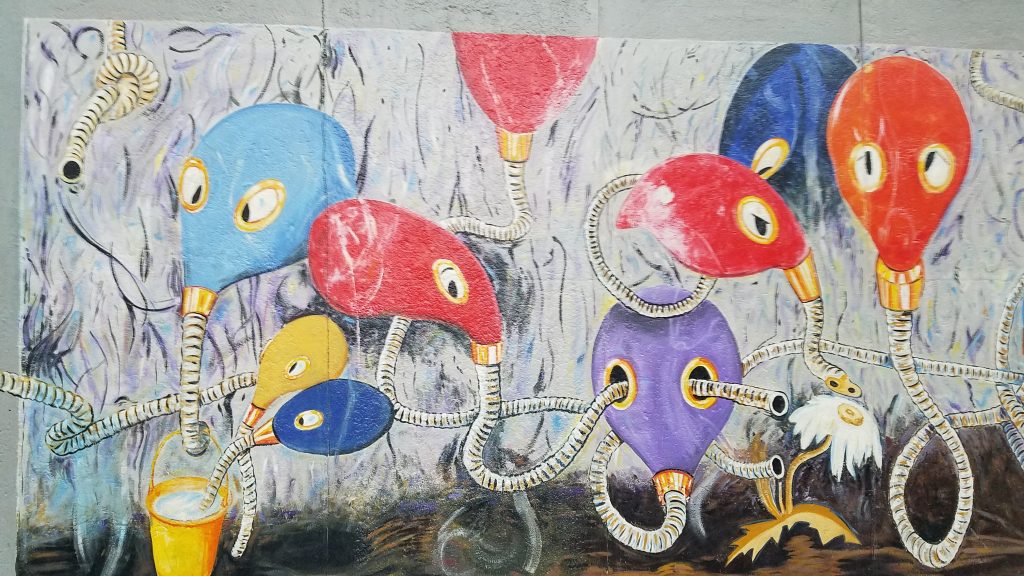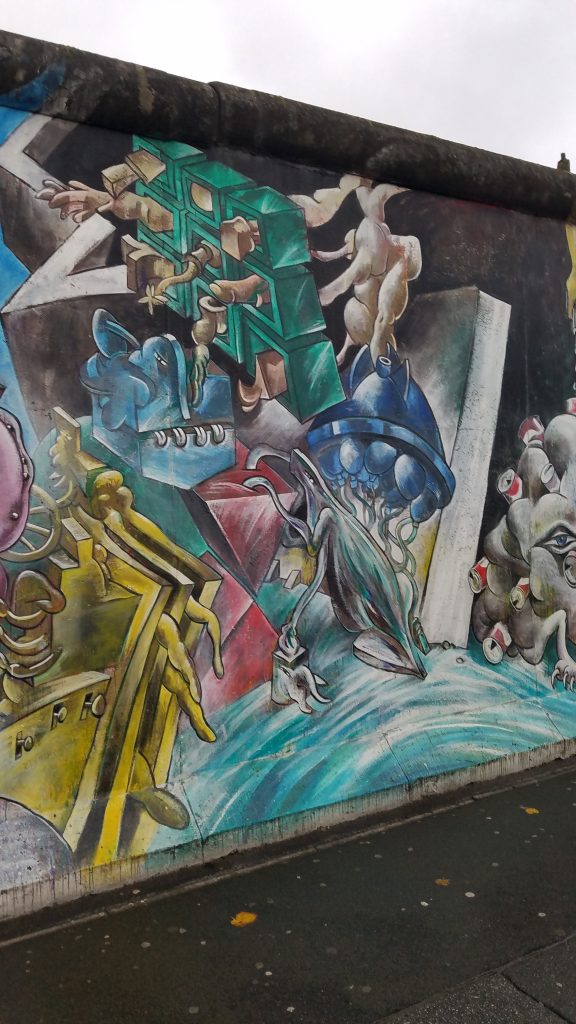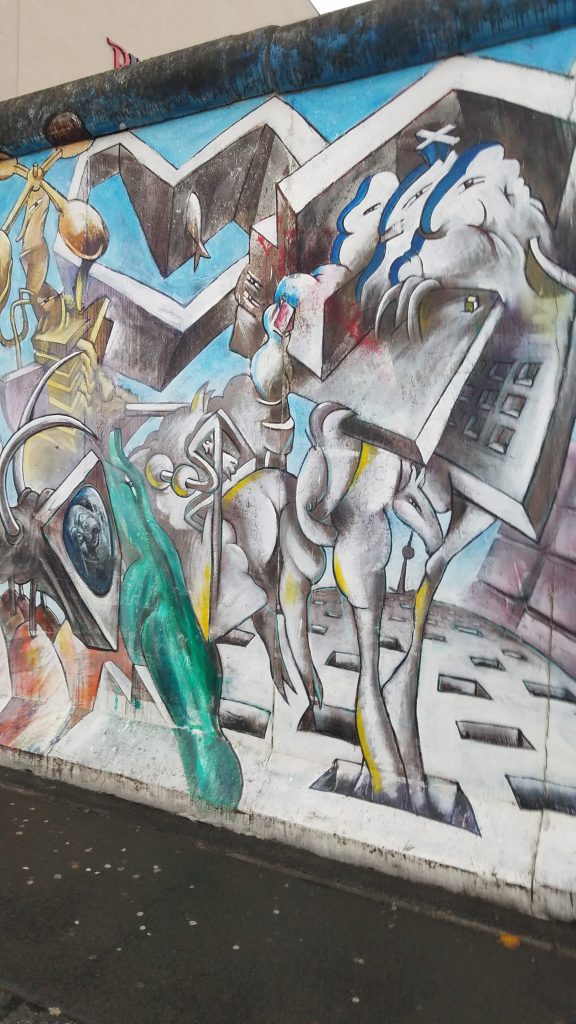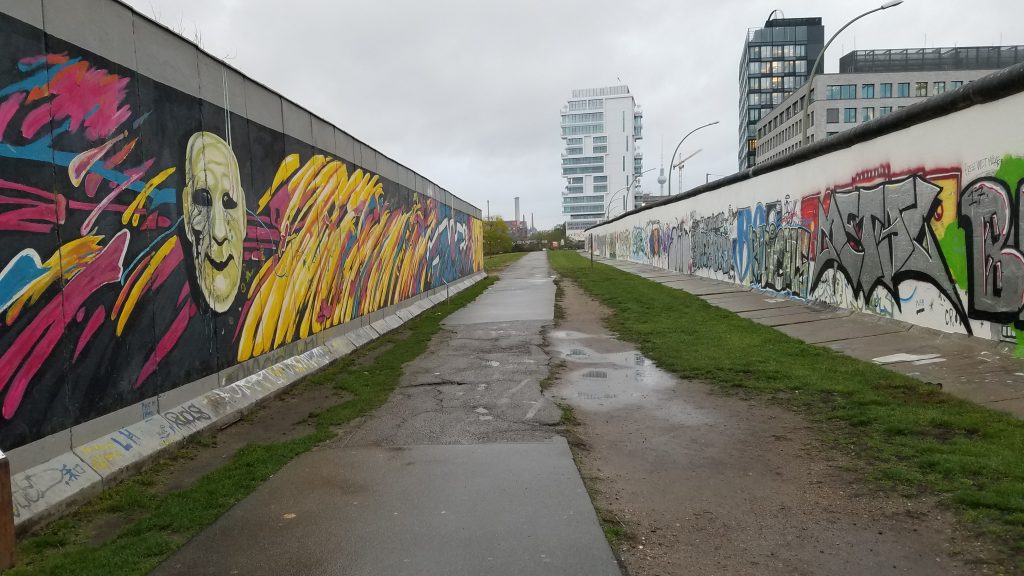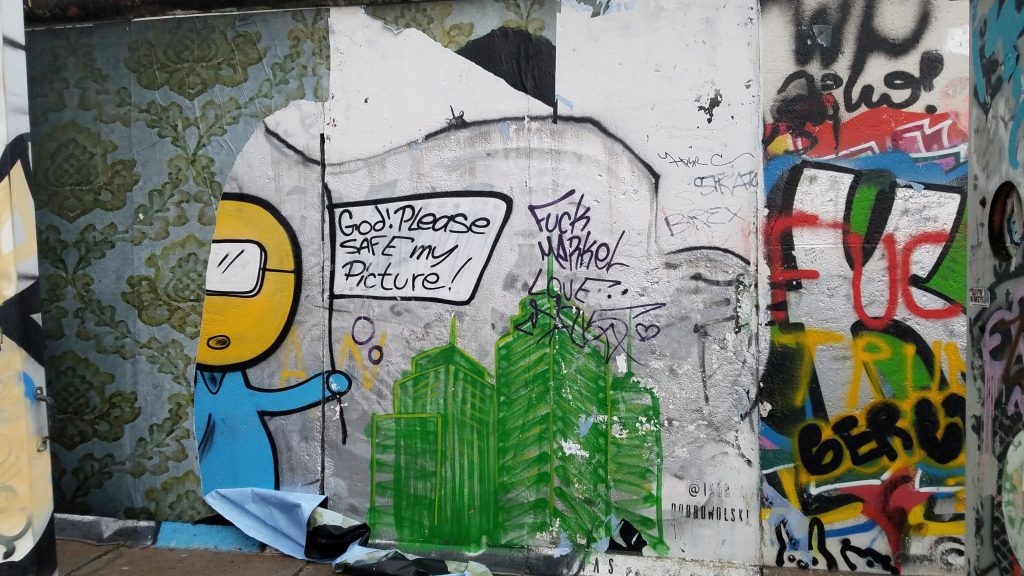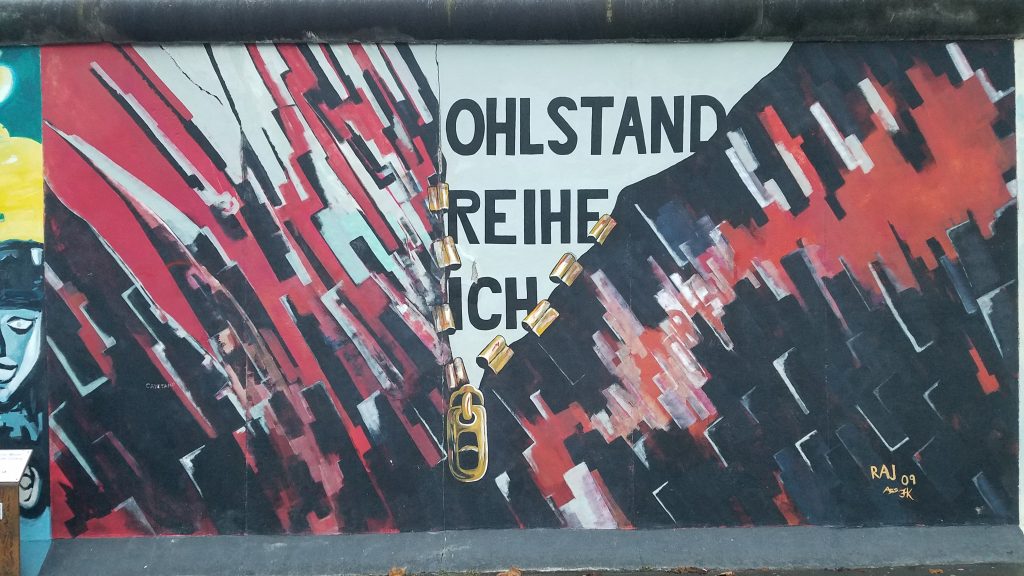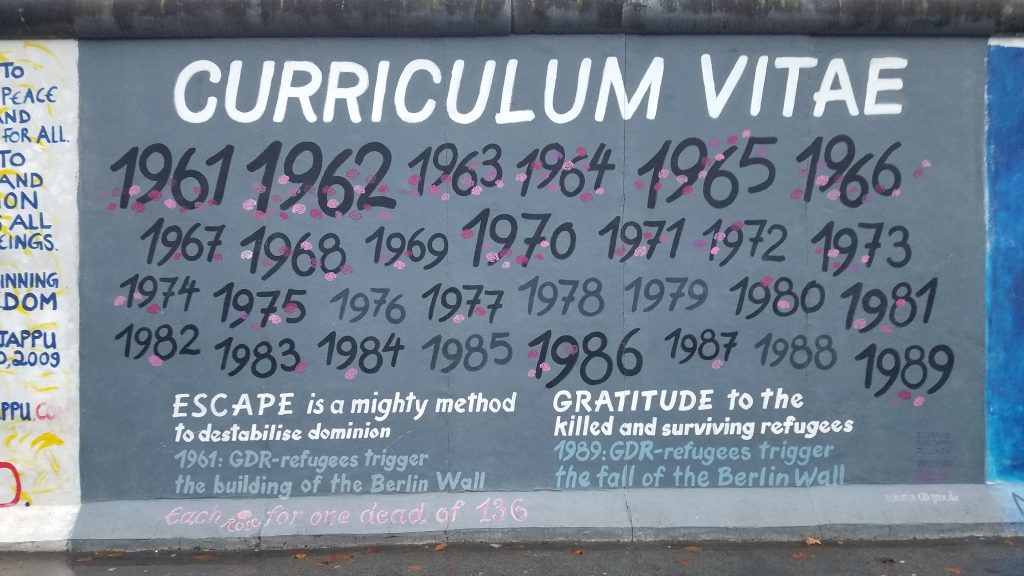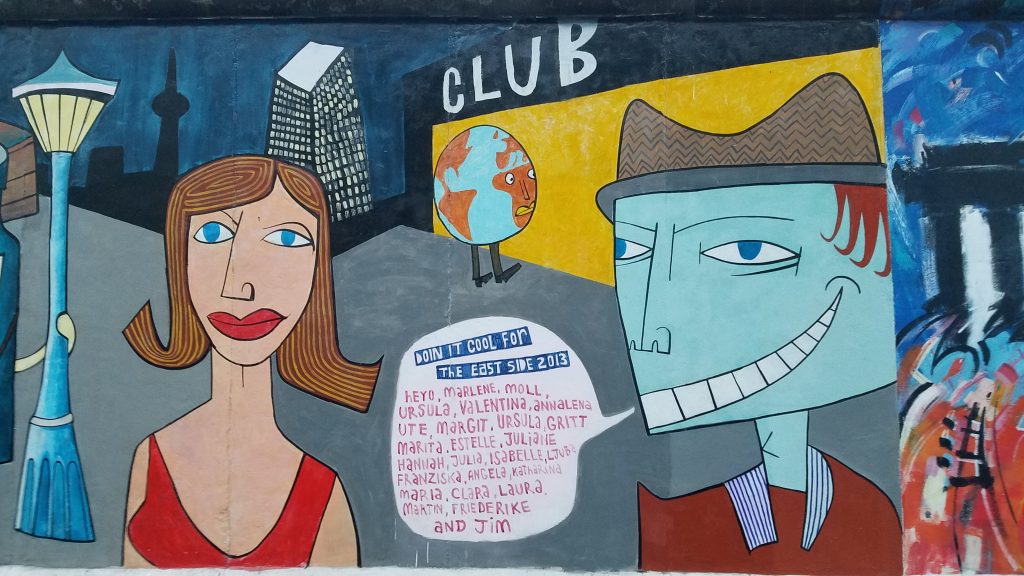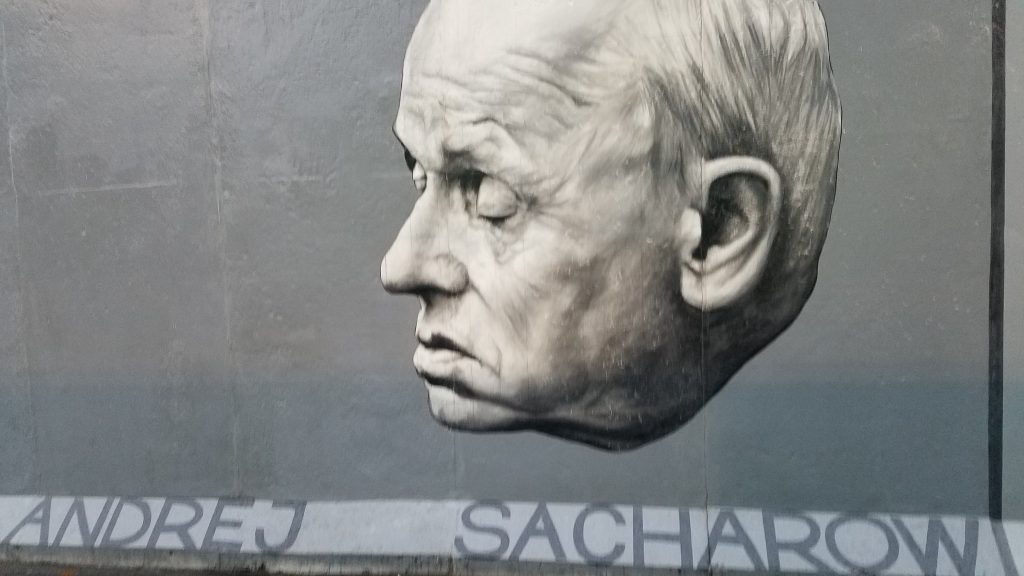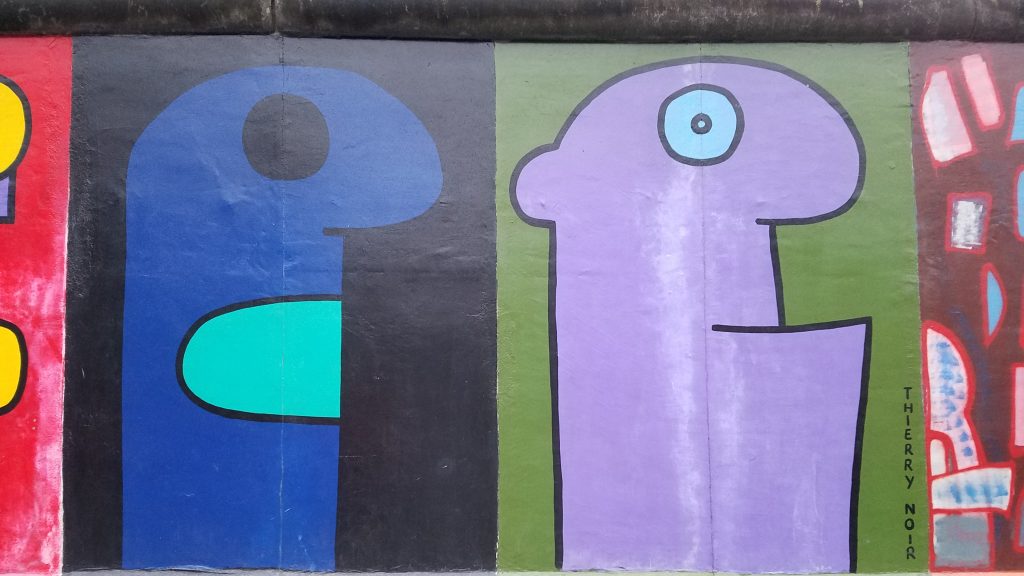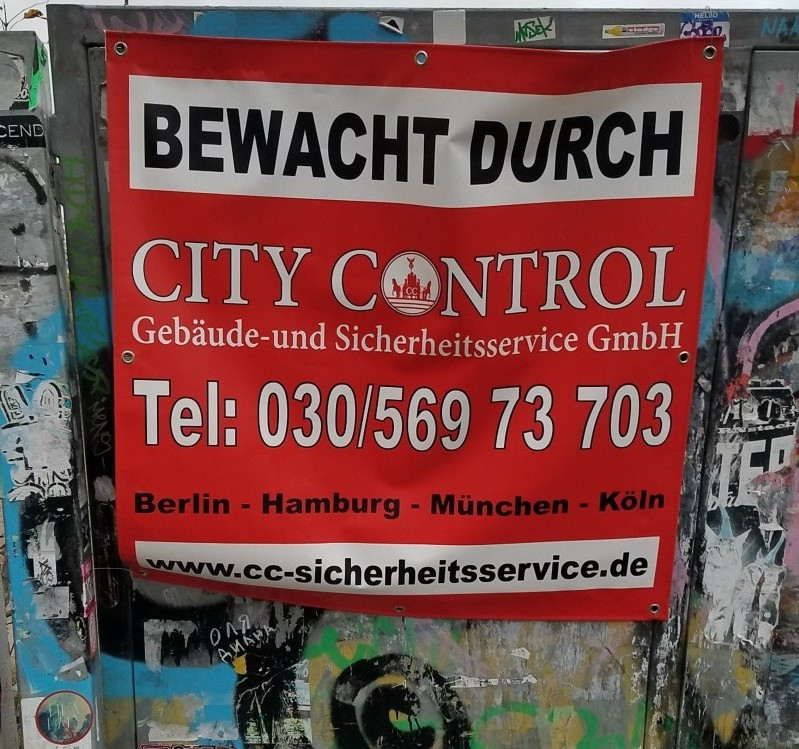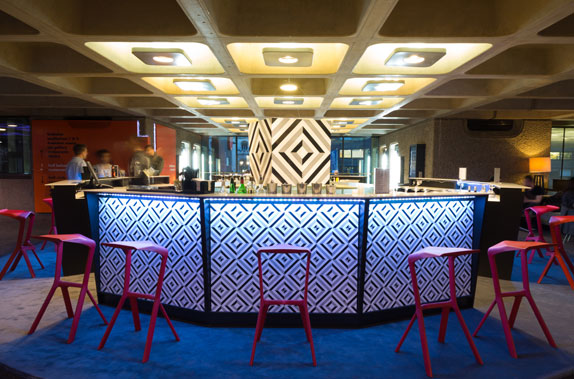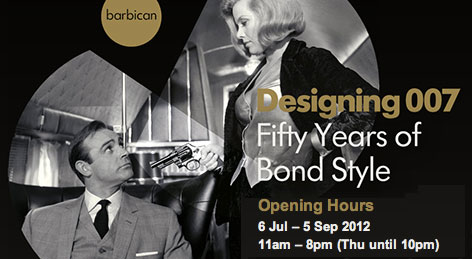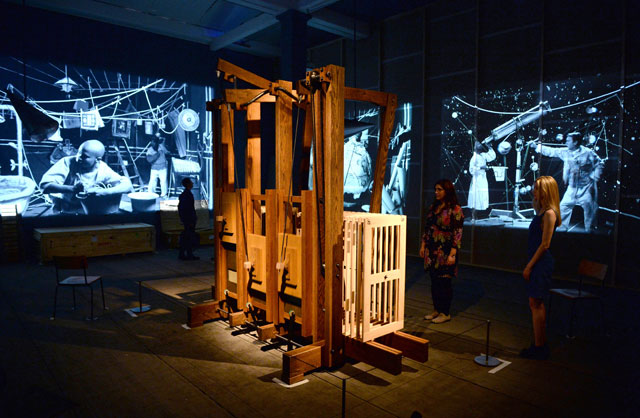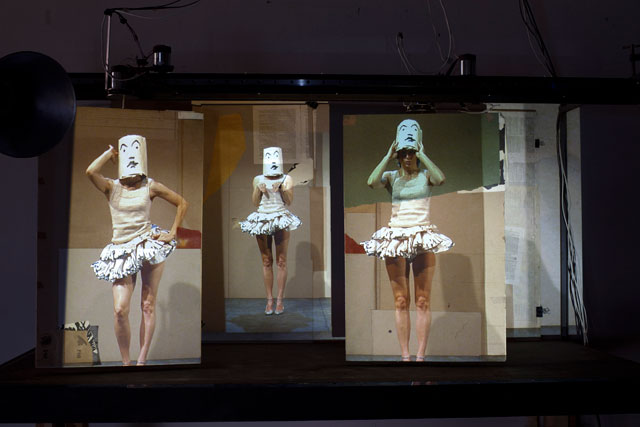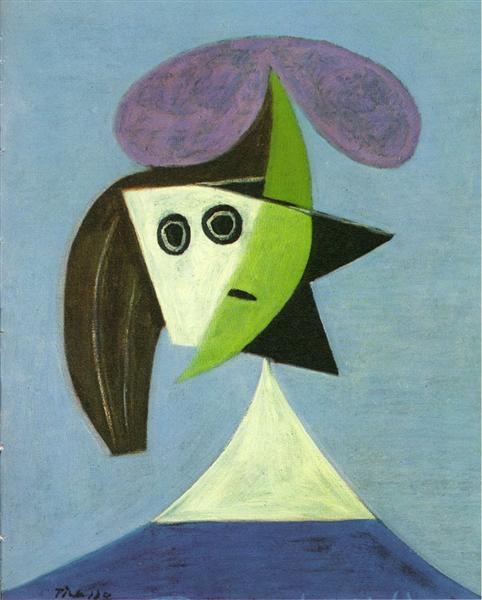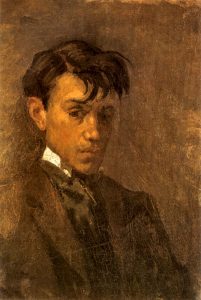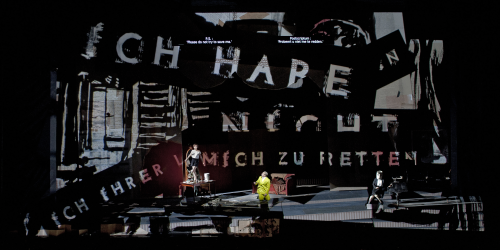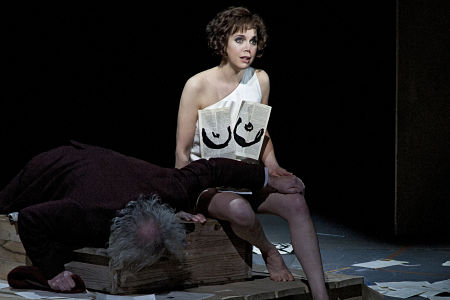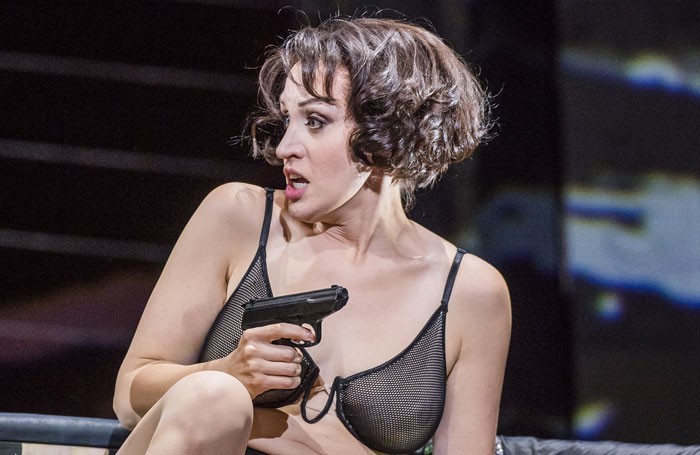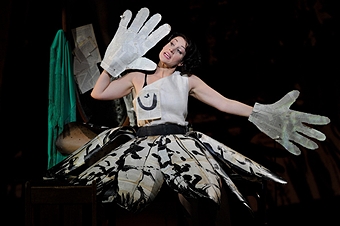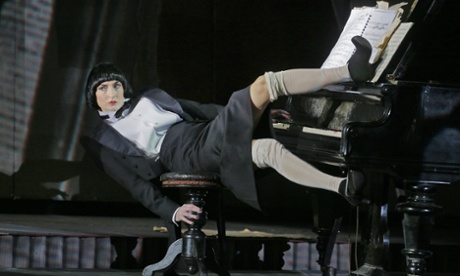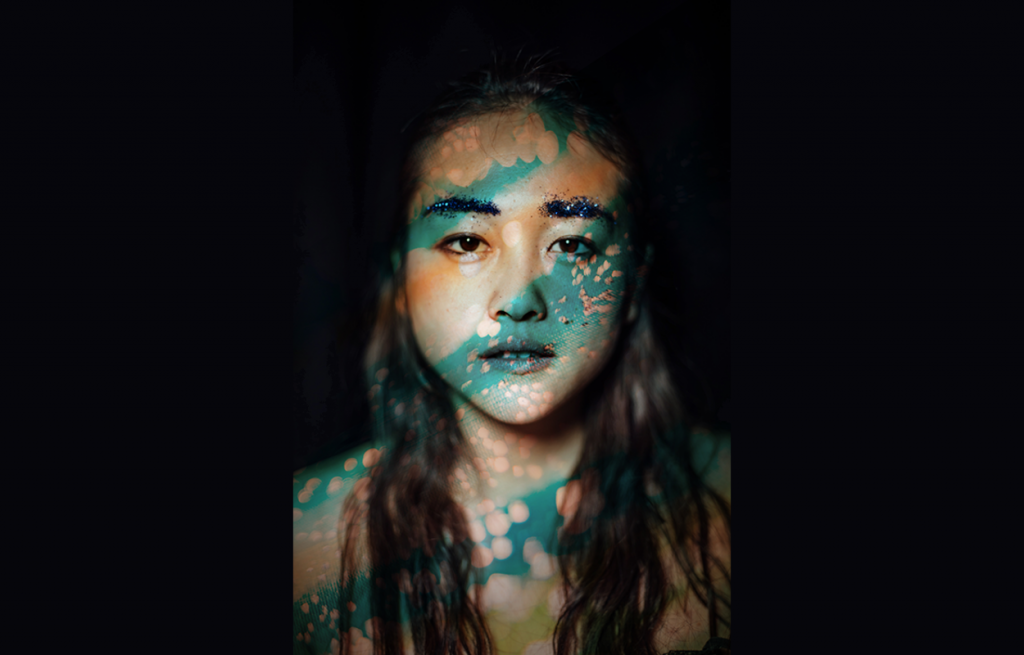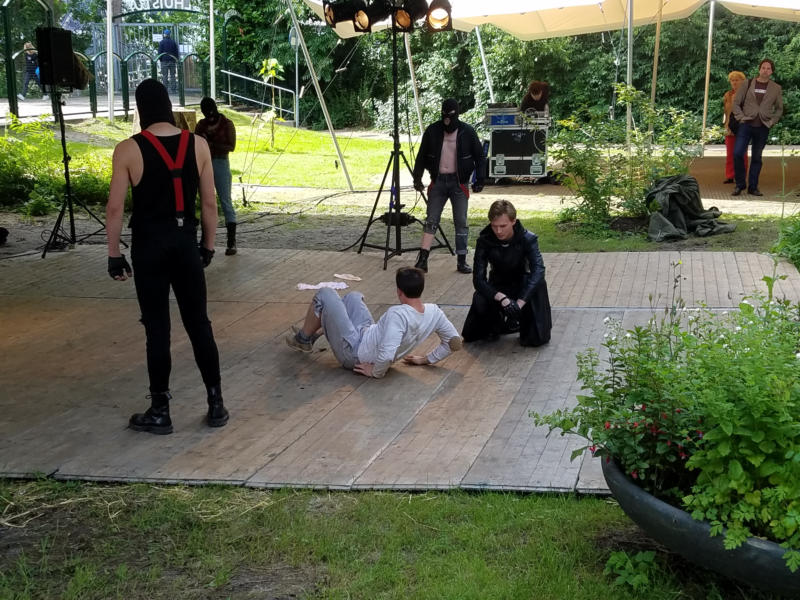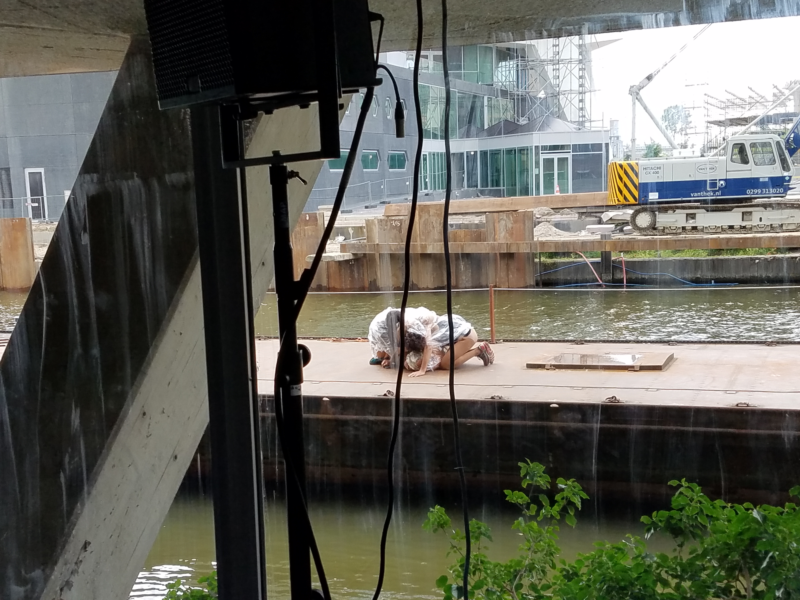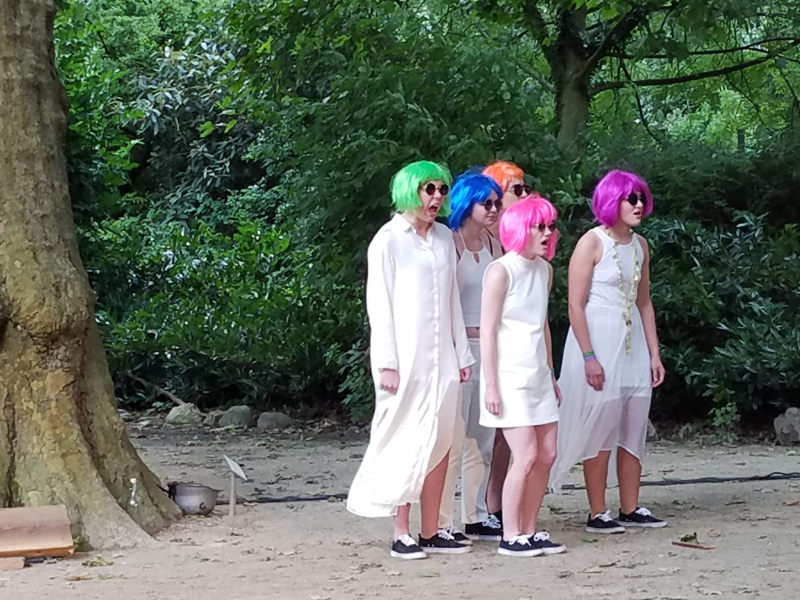As mentioned in an earlier post, this is the anniversary of the Velvet Revolution of 1989, but it’s also the commemoration of the student uprising of 1974, a full 15 years earlier, and a communist crackdown which followed on the heels of that.
So I went to the National Gallery, and caught my tram, the number 17, suitably enough, on 17 Listopadu, (17 November) street, so named for the more somber commemorative event.
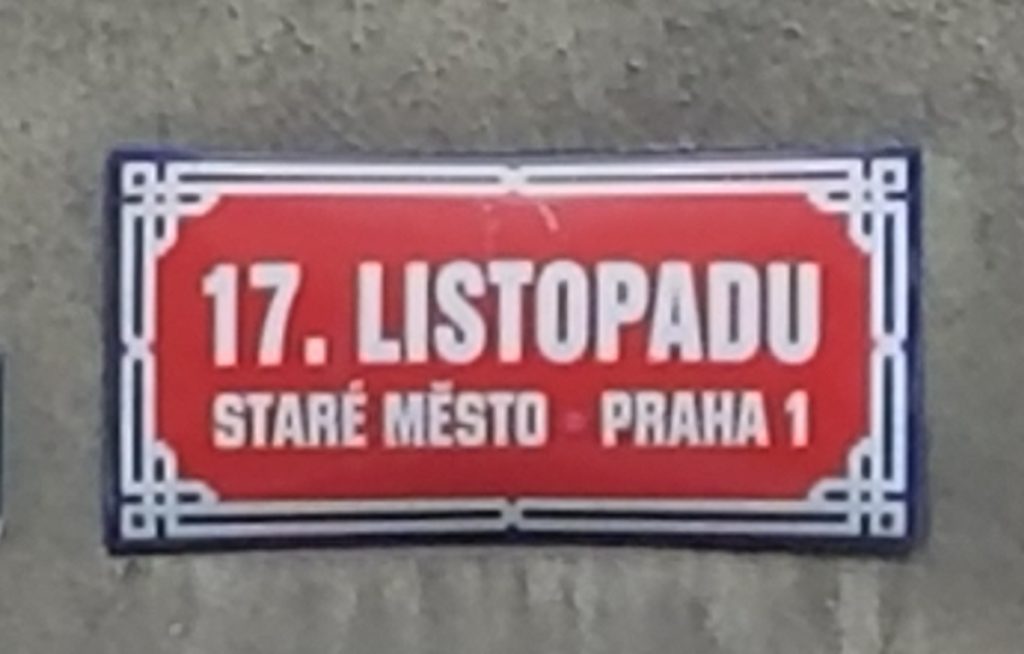
A plaque there reminds us, in English & Czech
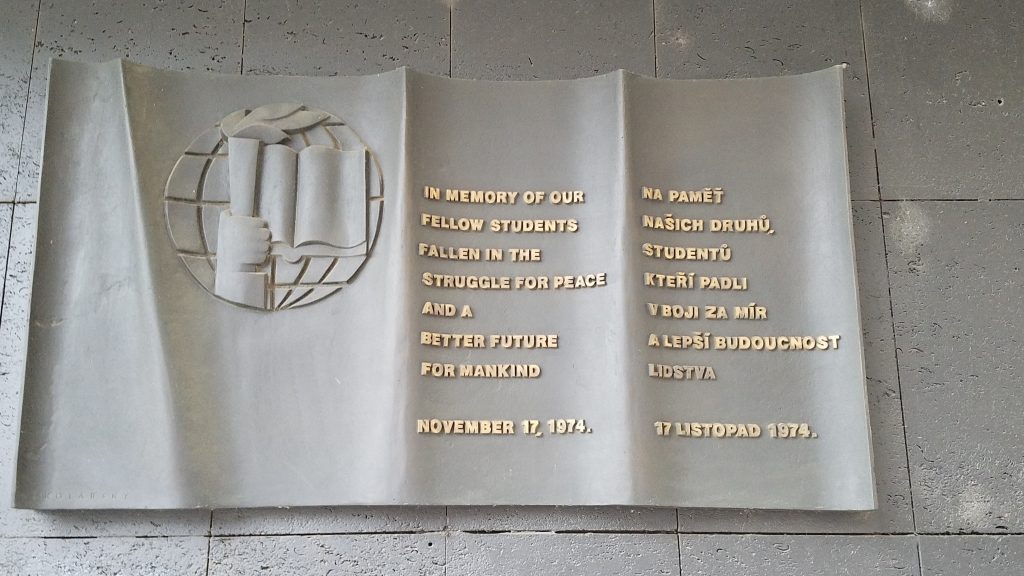
This, combined with my early morning hectoring (see a couple of posts down), served to jog my brain’s connective tissues and I suddenly realized why there were no performances at area theatres, etc. this evening. The Velvet Reunion is today! That explains those temporary stages I saw being put up in Wenceslas Square yesterday!
Doh!
So I caught my tram up to the Trade Fair Palace, which houses the more modern portion of the Czech National Gallery collection (it’s scattered about among several museums, the main one of which is closed for renovations until 2019). This building, about a century old, is a functionalist marvel, and pretty darn cool. Makes a good museum, too.
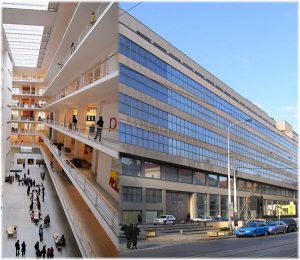
Turns out that this being the Velvet Reunion day, admissions to national museums is free. Cool! Still have to pay for the temporary exhibit I want to attend, but at 150 CK (about $6.50) I don’t mind one bit. Less than the cost of a matinée at your local movie theater.
And that’s a bargain, since what I’m going to see is the Julian Rosefeldt film Manifesto, as it was intended to be seen, on thirteen separate screens, in one large room, all going at once. Splendid!!
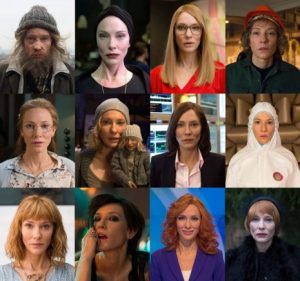
Those of you who were lucky enough to see this during the 2017 Milwaukee Film Festival, or on DVD (Netflix has it, which is how I saw it, thanks to X) you already can imagine where this is going. For those of you who know not of which I speak, allow me to summarize. Actually, allow the mystically translated words of the National Gallery serve that purpose:
The 13-channel film installation Manifesto pays homage to the moving tradition and literary beauty of artist manifestos, ultimately questioning the role of the artist in society today. Manifesto draws on the writings of Futurists, Dadaists, Fluxus artists, Suprematists, Situationists, Dogma 95 and other artist groups, and the musings of individual artists, architects, dancers and filmmakers. Passing the ideas of Claes Oldenburg, Yvonne Rainer, Kazimir Malevich, André Breton, Elaine Sturtevant, Sol LeWitt, Jim Jarmusch, and other influencers through his lens, Rosefeldt has edited and reassembled thirteen collages of artists’ manifestos.
Performing this ‘manifesto of manifestos’ as a contemporary call to action, while inhabiting thirteen different personas – among them a school teacher, a puppeteer, a newsreader, a factory worker and a homeless man – Australian actress Cate Blanchett imbues new dramatic life into both famous and lesser known words in unexpected contexts.
In the anteroom of the gallery is an exhibit of manifesti (what is the plural of Manifesto?), many of which are featured in the film. Here’s some unartful snaps of them; pardon the glare:
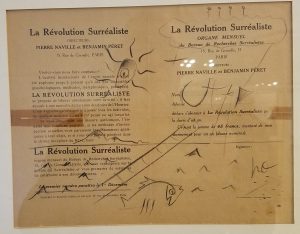
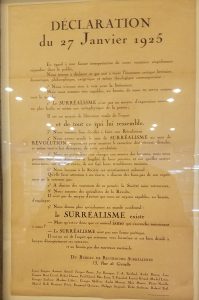
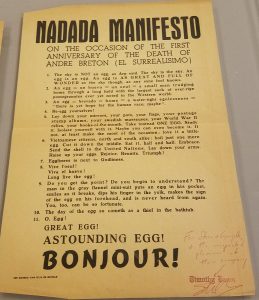
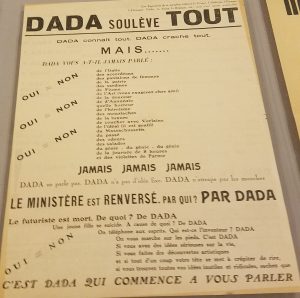
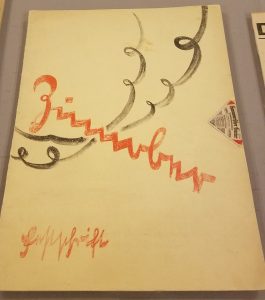
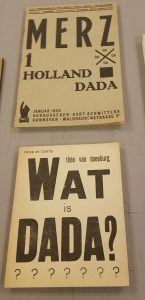
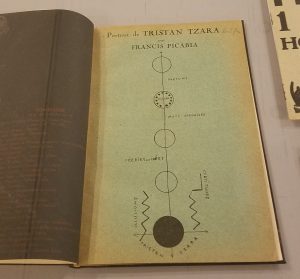
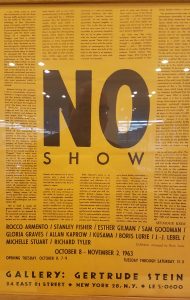
No, I didn’t read them all. But, the photos are actually pretty hi-res, so I probably still can. I did enjoy listening to the Czech-lish descriptions of them all from the multi-lingual tour guide who’s group was lagging a little behind me as I browsed. It was especially fun to hear him explain such concepts as Fluxus, Dada and such in the context of today’s “Fake News!” world (his citation, not mine).
Now into the main gallery. The darkened room is quickly filled with light from a large projection screen, which is filling with licks of flame as the first of the manifestos is spoken in voice over by Ms Blanchett. I am drawn not to sit before this screen, however, as I want to get a sense of how the whole thing is laid out. I enter further into the space. The walls are all blacked out, as are the pillars. All that’s not black are the screens and the benches before them.
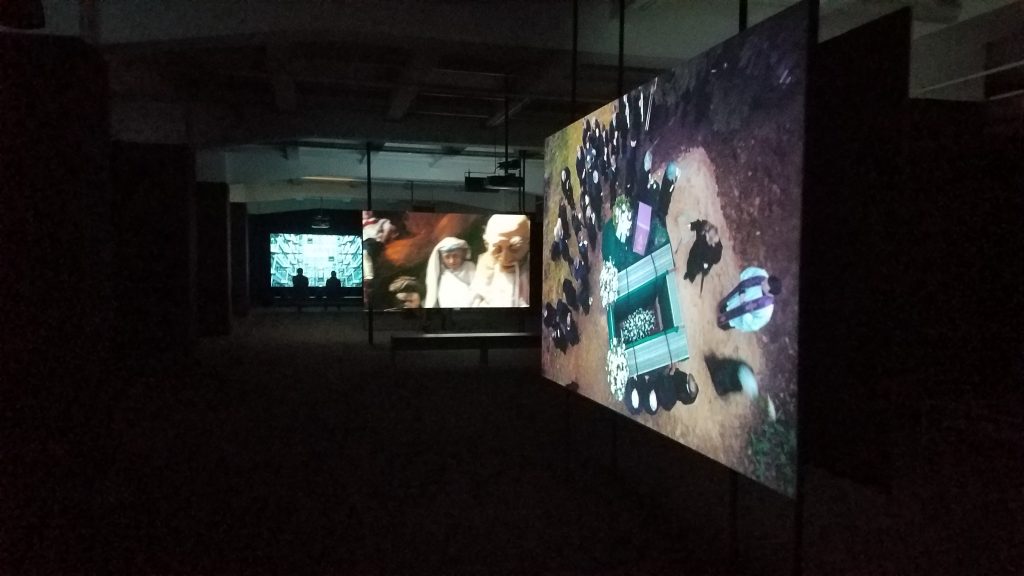
The screens are scattered around the space, and not too close together. Not all of the screens have sound on all of the time. Some have sound throughout, but others only have sound at the “golden moment” (as I’ll call it). Back to that shortly. Each screen is showing a segment in a loop. All of the loops are the same length, and all have just the right kind of beginning and ending that they loop seamlessly, more or less. I hadn’t recognized this when seeing them all strung together into a sequence, in the film. But it becomes quite clear when you’re watching one and all of a sudden realize that you’ve come around full circle.
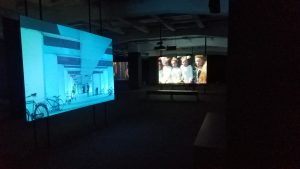
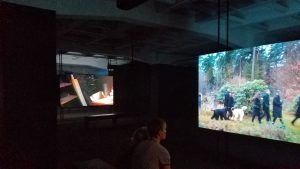
You can generally hear some sound from other screens around you, but it’s not intrusive. Some of the characters voices carry more than others. The high-strung, severe choreographer, for example, can be heard just about anywhere in the space, as can the vagrant with a megaphone atop the ruins. The mother saying grace (sort of) is fairly quiet, as is the woman saying a eulogy. But then the Golden Moment arrives.
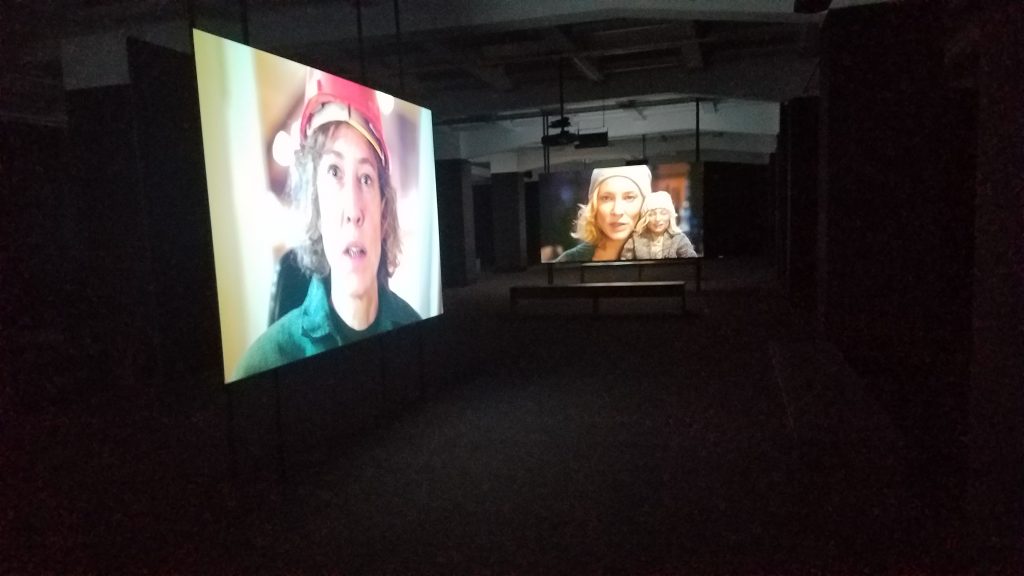
This moment comes about 2/3 of the way through the loops, I think, but it’s not really clear to me that all of these loops start and end at the same moment; just that they’re synchronized with each other, That much is clear. At this moment, every screen is taken up with a close up of Blanchett’s face, who is staring straight into the camera, and speaking in a high-pitched, almost robotic voice. Each iteration of Blanchett is speaking words which belong with that incarnation’s manifesto, but there is an almost unison effect between them. As I’ve previously stated, this is the only time when all of the screens have audio, so it can be quite arresting when the stock trader you’ve been watching in relative silence suddenly is starring straight at you and barking out some pith.
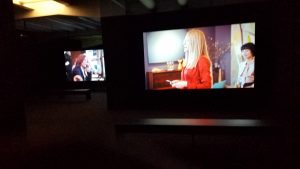
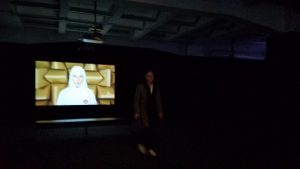
I spent over an hour in this space, wandering about, standing and watching, or sitting on a bench. I loved the entire experience! The multi-lingual tour group from the outer exhibit found their way around, and tended to sit, as a group, before each screen, whilst the guide flitted about stage whispering to them in different languages. I noticed one couple, man and woman in their 20s, just sat side-by-side in front of the puppet maker screen for at least four or five loops. They were enthralled with it (easy to understand).
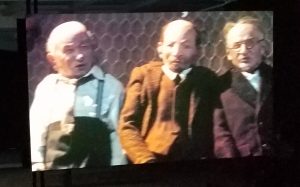
What a great way to spend part of my Friday! I love this stuff.
There was a lot more to see in the museum, and I did thoroughly enjoy my visit. Didn’t even drop any dough in the gift shop, because it wasn’t a gift shop, it was a book shop, and I don’t read Czech! 🙂
More photos from the day later.
O Egg
GREAT EGG!
OUTSTANDING EGG!
BONJOUR!

